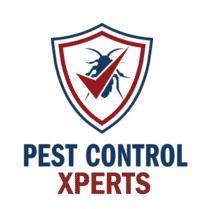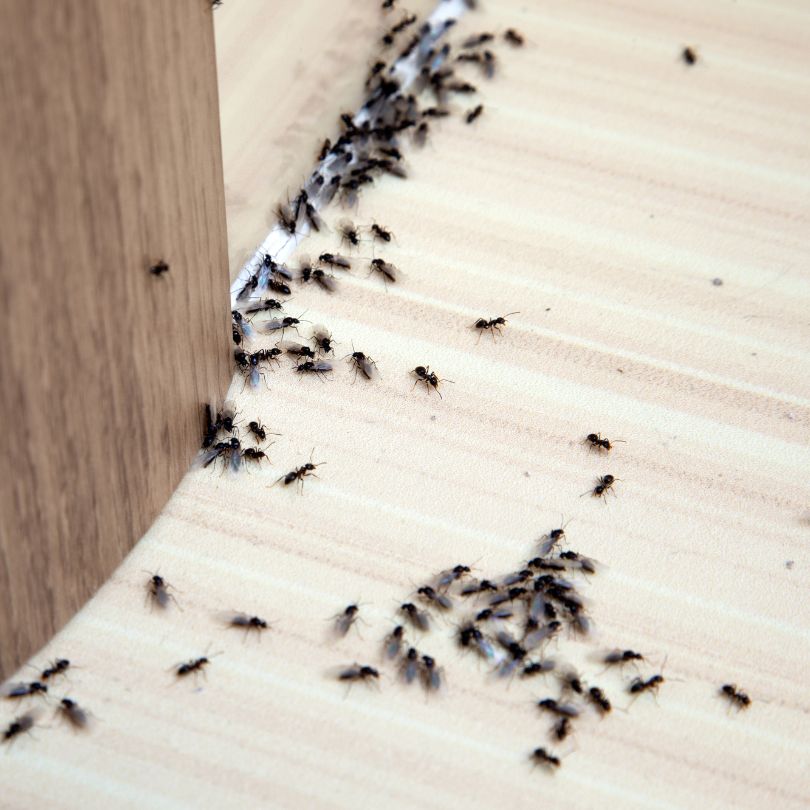Ant Removal and Control in Binghamton
Serving residences and businesses throughout Binghamton, Vestal, Johnson City, Endicott, Endwell, Windsor, Whitney Point, Owego, and Apalachin.
Serving homes and businesses throughout Vestal, Johnson City, Endicott, Endwell, and Windsor
Pest Control Xperts provides thorough ant removal for the Southern Tier of New York. When sugar trails appear across a kitchen counter or winged swarmers emerge near window sills, an established colony is already active behind walls, beneath slabs, or inside roof framing. Left unchecked, ants contaminate food, damage structural wood, and erode customer confidence in any commercial setting. Our local exterminator team combines detailed inspection, precise baiting, low‑odor liquid barriers, and practical prevention coaching to keep properties in Binghamton and the surrounding communities free from persistent ant activity.
Climate and Geography Drive Ant Pressure
Binghamton sits where the Susquehanna and Chenango Rivers meet. Moist air settles in the valley each evening, leaving dew that dampens mulch beds and foundation soil. Spring arrives with snow melt and steady rain, conditions that soften wood trim and invite carpenter ants to excavate galleries unseen. Summer temperatures often reach the middle eighties while nighttime lows stay near sixty. These mild nights allow ants to continue foraging after sunset rather than retreating into nests. During fall, cool fronts push field ants indoors seeking warmer spaces, and brief winter thaws can wake dormant colonies for short feeding bursts.
Suburban communities such as Vestal and Endwell feature mature hardwood trees. Fallen acorns and early morning irrigation sustain insect prey that becomes food for many ant species. Commercial corridors in Johnson City and Endicott were built decades ago with expansion joints that now crack and leak moisture, forming perfect entry points for pavement ants. Rural properties in Windsor often include stacked firewood and untreated deck posts; these wood sources attract carpenter ants once spring humidity rises. Understanding how climate, soil type, and construction style interact across the region helps Pest Control Xperts time treatments for maximum impact.
Common Ant Species in New York’s Southern Tier
Species | Key traits | Typical hideouts | Primary concerns |
Carpenter ant | Large black or two toned body, creates sawdust like frass | Damp window frames, porch beams, attic rafters | Structural weakening over time |
Odorous house ant | Tiny dark brown ant, produces coconut like smell when crushed | Kitchen backsplashes, break room cupboards | Sugar raids and lingering odor |
Pavement ant | Brown to nearly black, forms small sand piles at entrance holes | Concrete cracks, basement slabs, garage floors | Visible trails that alarm residents or guests |
Argentine ant | Uniform light brown color, many queens per colony | Moist soil along downspouts, shrub drip lines | Rapid spread indoors once established |
Pharaoh ant | Very small yellow body, nests inside building voids | Behind electrical plates, inside hospital cabinetry | Food contamination, difficult to eliminate with sprays |
Field ant | Reddish or black, builds low soil mounds outdoors | Lawn edges, compost piles, garden borders | Stinging bites when nests are disturbed |
Correct identification is critical. Each species requires a specific bait formula, placement height, and follow up schedule. Pest Control Xperts confirms the species during every inspection by examining workers under magnification and reviewing nesting behavior.
Risk Factors Linked to Ant Infestations
- Food contamination occurs when ants travel from refuse areas to pantry shelves or serving counters.
- Wood damage results when carpenter ants hollow porch columns, sill plates, or window frames.
- Odor complaints arise as high numbers of odorous house ants release defensive chemicals.
- Customer dissatisfaction follows the sight of pavement ants marching across dining room tile.
- Equipment failures can occur when ants such as pharaoh ants cluster inside printed circuit boards and short electrical contacts.
Early professional intervention protects health, property value, and public reputation.
Five Step Ant Removal Program
Comprehensive inspection
A certified technician begins with a conversation about recent sightings, sanitation routines, and moisture concerns. The inspector traces foraging paths with a flashlight along baseboards, inside cabinet corners, and behind appliances. Outdoors, mulch depth, shrub spacing, weep gaps, and slab seams receive close attention. Findings are photographed and plotted on a digital map.
Targeted treatment
- Gel and granular baits that match the identified species are set along active trails in protected crevices.
- A discreet liquid barrier using a modern non repellent product is applied to foundation soil, masonry gaps, and pipe entrances so ants contact it without alarm.
- Expanding foam is injected into hollow voids where carpenter or pharaoh ants nest, reaching deep galleries without opening walls.
- Broadcast bait is spread across turf when large lawn colonies require area control.
Moisture correction and exclusion
Technicians advise on diverting downspouts, adjusting sprinkler heads, sealing mortar cracks, and installing door sweeps. Reducing water sources and blocking entry points helps the treatment last.
Follow up verification
Most colonies collapse within one to two weeks. Multi queen species such as Argentine or pharaoh ants may need additional bait cycles. Pest Control Xperts schedules a return visit to confirm bait consumption, remove inactive monitors, and treat any fresh activity.
Maintenance plan options
Quarterly exterior bait placement combined with an annual attic inspection keeps barriers renewed and catches new colonies before they expand indoors. Service logs track product rotation and climate data, meeting insurance or management record needs.
Local Seasonality Overview
- March and April bring thawing soil that releases moisture into sill plates. Carpenter ants resume tunneling early.
- May through August offer steady warmth. Sugar based ant activity peaks in kitchens and food service spaces.
- September and October feature cool nights. Field ants and pavement ants move indoors looking for heat sources.
- December through February remain cold outside, but indoor heating keeps wall voids warm enough for pharaoh ants to stay active year round.
Knowing this cycle allows our exterminator team to schedule proactive service before seasonal spikes begin.
Why Choose Pest Control Xperts
- Regional insight gained from years of monitoring Broome County rainfall trends, building designs, and pest pressure changes.
- Integrated methods blend bait, liquid, foam, growth regulators, exclusion, and sanitation guidance rather than relying on a single spray.
- Transparent reporting delivers high resolution photographs, product labels, and treatment diagrams through a secure online portal.
- Flexible scheduling offers early morning, evening, and weekend appointments convenient for families, businesses, and facility managers.
- Value driven preventive service helps clients avoid unexpected infestations and the higher costs of emergency response.
Everyday Prevention Tips
- Wipe counters after each meal to remove sticky residue that attracts ants.
- Store cereal, sugar, and pet food in tight sealing plastic buckets or glass jars.
- Rinse drink containers before placing them in recycling.
- Keep mulch shallow and pulled back at least six inches from vinyl or brick siding.
- Trim tree branches so they do not touch roof edges, denying carpenter ants a bridge.
- Fix leaking hoses, outdoor faucets, and basement dehumidifier drains promptly.
- Clean grill drip trays and patio tables after cookouts.
- Inspect potted plants for nesting ants before bringing them indoors during frost warnings.
- Vacuum pantry shelving monthly and discard expired snacks quickly.
- Schedule a professional Binghamton pest control inspection each spring before winged swarm season begins.
Frequently Asked Questions
How fast will ant activity stop
Light infestations often fade within several days after bait placement. Large multi nest colonies may need two full bait cycles and a follow up visit.
Will treatments harm pets or children
Baits sit inside protected cracks or low profile stations. Liquids dry quickly and become invisible. Family members and pets can return to treated spaces once surfaces are dry, usually after two hours.
Do we need to leave during service
No. Interior applications stay in concealed areas rather than open air, allowing occupants to remain on site.
Contact Pest Control Xperts Today
Ant trails inside your kitchen, sawdust piles beneath porch beams, or sudden winged swarms near windows all indicate active colonies. Waiting allows ants to spread farther, spoil food, and compromise wood. Pest Control Xperts is ready with prompt ant removal for Binghamton, Vestal, Johnson City, Endicott, Endwell, and Windsor. Our exterminator team diagnoses the species, treats nests inside and out, and shares prevention steps adapted to Southern Tier conditions. Contact us Today to schedule a detailed inspection or enroll in a maintenance plan that keeps your property free of ants in every season.



